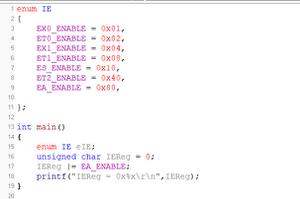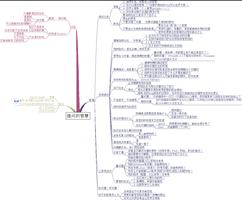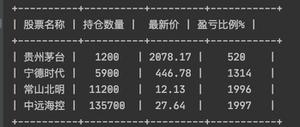Python-在组对象上应用vs变换
考虑以下数据框:
A B C D0 foo one 0.162003 0.087469
1 bar one -1.156319 -1.526272
2 foo two 0.833892 -1.666304
3 bar three -2.026673 -0.322057
4 foo two 0.411452 -0.954371
5 bar two 0.765878 -0.095968
6 foo one -0.654890 0.678091
7 foo three -1.789842 -1.130922
以下命令起作用:
> df.groupby('A').apply(lambda x: (x['C'] - x['D']))> df.groupby('A').apply(lambda x: (x['C'] - x['D']).mean())
但以下任何一项均无效:
> df.groupby('A').transform(lambda x: (x['C'] - x['D']))ValueError: could not broadcast input array from shape (5) into shape (5,3)
> df.groupby('A').transform(lambda x: (x['C'] - x['D']).mean())
TypeError: cannot concatenate a non-NDFrame object
为什么? 文档中的示例似乎建议通过调用transform组,可以进行行操作处理:
# Note that the following suggests row-wise operation (x.mean is the column mean)zscore = lambda x: (x - x.mean()) / x.std()
transformed = ts.groupby(key).transform(zscore)
换句话说,我认为转换本质上是一种特定的应用类型(不聚合的类型)。我哪里错了?
供参考,以下是上面原始数据帧的构造:
df = pd.DataFrame({'A' : ['foo', 'bar', 'foo', 'bar', 'foo', 'bar', 'foo', 'foo'],
'B' : ['one', 'one', 'two', 'three',
'two', 'two', 'one', 'three'],
'C' : randn(8), 'D' : randn(8)})
回答:
transform和applygroupby方法之间有两个主要区别。
- 输入:
apply将每个组的所有列作为DataFrame隐式传递给自定义函数。- 同时
transform将每个组的每一列作为系列分别传递给自定义函数。 - 输出:
- 传递给的自定义函数
apply可以返回标量,或者返回Series或DataFrame(或numpy数组,甚至是list)。 - 传递给的自定义函数
transform必须返回与group长度相同的序列(一维Series,数组或列表)。因此,
transform一次只能处理一个Series,而一次apply可以处理整个DataFrame。
检查传递给applyor的自定义函数的输入可能会很有帮助transform。
例子
让我们创建一些示例数据并检查组,以便你可以了解我在说什么:
import pandas as pddf = pd.DataFrame({'State':['Texas', 'Texas', 'Florida', 'Florida'],
'a':[4,5,1,3], 'b':[6,10,3,11]})
df
让我们创建一个简单的自定义函数,该函数打印出隐式传递的对象的类型,然后引发错误,以便可以停止执行。
def inspect(x): print(type(x))
raise
现在让我们将此函数传递给groupby apply和transformmethod,以查看传递给它的对象:
df.groupby('State').apply(inspect)<class 'pandas.core.frame.DataFrame'>
<class 'pandas.core.frame.DataFrame'>
RuntimeError
如你所见,DataFrame被传递到inspect函数中。你可能想知道为什么将DataFrame类型打印两次。熊猫两次参加第一组比赛。这样做是为了确定是否存在快速完成计算的方法。这是你不应该担心的次要细节。
现在,让我们用 transform
df.groupby('State').transform(inspect)<class 'pandas.core.series.Series'>
<class 'pandas.core.series.Series'>
RuntimeError
它传递了一个Series-一个完全不同的Pandas对象。
因此,一次transform只能使用一个系列。它不可能同时作用于两根色谱柱。因此,如果尝试a从b自定义函数中减去column ,则会出现错误transform。见下文:
def subtract_two(x): return x['a'] - x['b']
df.groupby('State').transform(subtract_two)
KeyError: ('a', 'occurred at index a')
当熊猫试图找到a不存在的Series索引时,我们得到一个KeyError 。你可以通过完整apply的DataFrame 来完成此操作:
df.groupby('State').apply(subtract_two)State
Florida 2 -2
3 -8
Texas 0 -2
1 -5
dtype: int64
输出是一个Series,并且保留了原始索引,因此有些混乱,但是我们可以访问所有列。
显示传递的熊猫对象
它可以在自定义函数中显示整个pandas对象,从而提供更多帮助,因此你可以确切地看到正在使用的对象。你可以使用print我喜欢使用模块中的display函数的语句,IPython.display以便在Jupyter笔记本中以HTML形式很好地输出DataFrame:
from IPython.display import displaydef subtract_two(x):
display(x)
return x['a'] - x['b']
变换必须返回与组大小相同的一维序列
另一个区别是transform必须返回与该组相同大小的一维序列。在此特定情况下,每个组都有两行,因此transform必须返回两行的序列。如果没有,则会引发错误:
def return_three(x): return np.array([1, 2, 3])
df.groupby('State').transform(return_three)
ValueError: transform must return a scalar value for each group
该错误消息并不能真正描述问题。你必须返回与组相同长度的序列。因此,这样的功能将起作用:
def rand_group_len(x): return np.random.rand(len(x))
df.groupby('State').transform(rand_group_len)
a b
0 0.962070 0.151440
1 0.440956 0.782176
2 0.642218 0.483257
3 0.056047 0.238208
如果仅从自定义函数返回单个标量,transform则将其用于组中的每一行:
def group_sum(x): return x.sum()
df.groupby('State').transform(group_sum)
a b
0 9 16
1 9 16
2 4 14
3 4 14
以上是 Python-在组对象上应用vs变换 的全部内容, 来源链接: utcz.com/qa/419722.html





